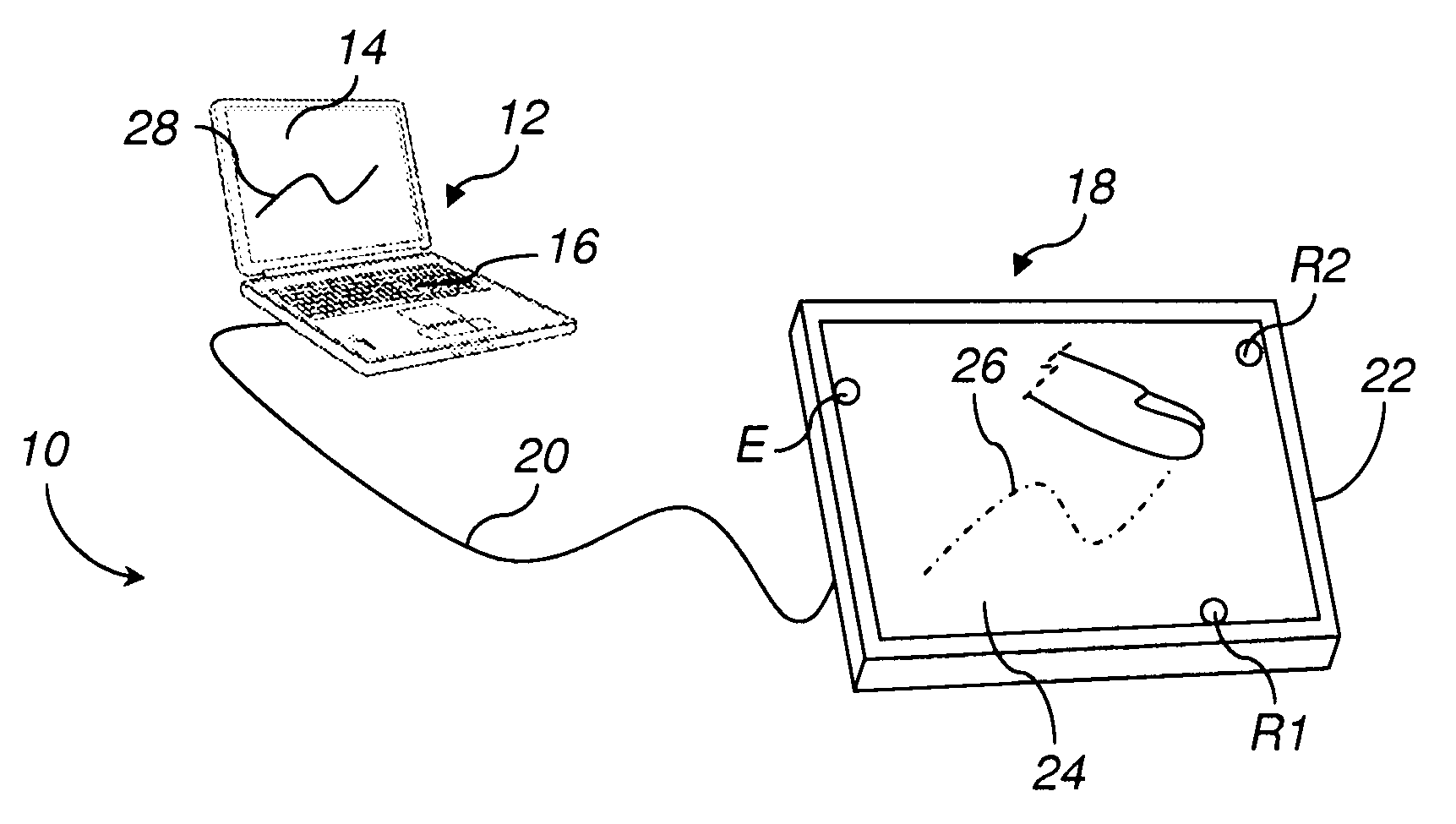Method and device for locating at least one touch on a touch-sensitive surface of an object
- Summary
- Abstract
- Description
- Claims
- Application Information
AI Technical Summary
Benefits of technology
Problems solved by technology
Method used
Image
Examples
first embodiment
[0074]FIG. 4 shows a front view of a touch-sensitive plate 24 of the device in FIG. 1 or 2, according to a Shaped as a rectangle, the plate 24 is attached to the frame 22 at four roughly point-shaped areas P located in the four corners of the rectangle. These areas are the only things that impose mechanical stress on the plate. They are therefore preferably located in the places on the plate 24 that are the least affected by the propagation of elastic mechanical waves, specifically the corners at the edges of the plate.
second embodiment
[0075] shown in FIG. 5, the plate 24 has a shape that is more complex than a rectangle. A first advantage of this more complex shape is that the radiation information in a propagation transient phase, or the diffraction information in a pulsed phase with the first reflections on the edges taken into account, may be more complex and can therefore distinguish the various possible locations of single or multiple touches. Usually indeed, in a solid object, and specifically with guided propagation, the vibratory energy includes longitudinal and transverse components whose proportions change according to the frequency. However, the reflection and acoustic modes conversion conditions at the limits of the solid object depend on the nature of the vibration such that the conditions of the acoustic illumination of the solid object in transient state and of accumulating vibratory energy during successive reflections in some areas of the object will depend on the excitation frequency, especially...
PUM
 Login to View More
Login to View More Abstract
Description
Claims
Application Information
 Login to View More
Login to View More - R&D
- Intellectual Property
- Life Sciences
- Materials
- Tech Scout
- Unparalleled Data Quality
- Higher Quality Content
- 60% Fewer Hallucinations
Browse by: Latest US Patents, China's latest patents, Technical Efficacy Thesaurus, Application Domain, Technology Topic, Popular Technical Reports.
© 2025 PatSnap. All rights reserved.Legal|Privacy policy|Modern Slavery Act Transparency Statement|Sitemap|About US| Contact US: help@patsnap.com



